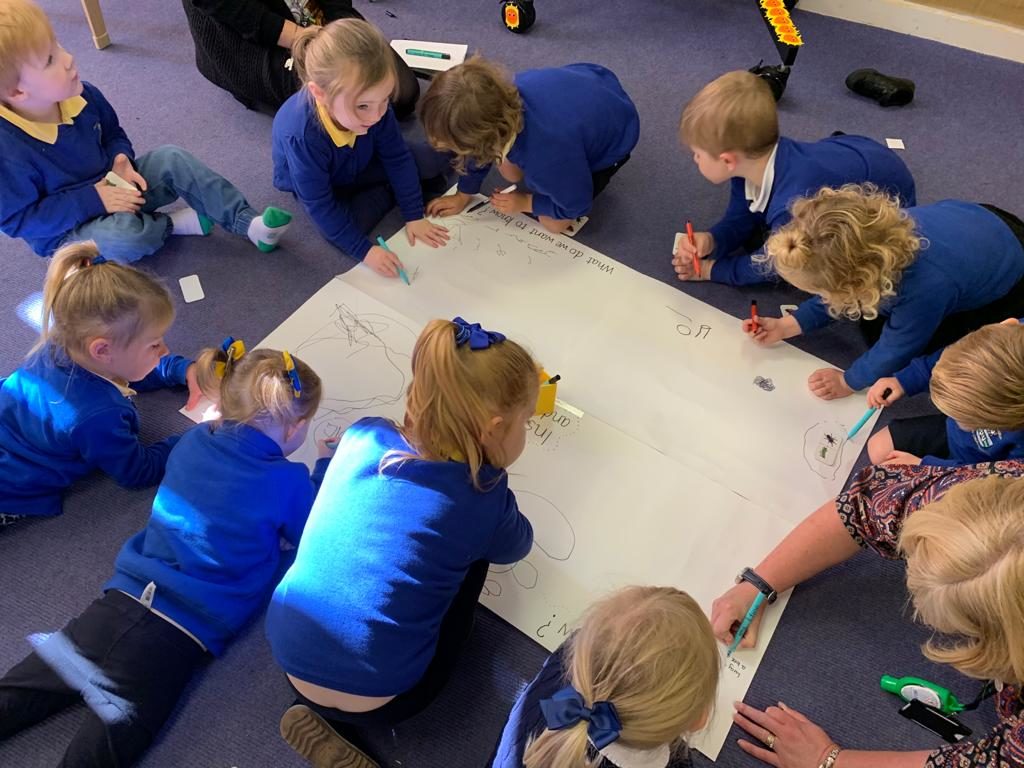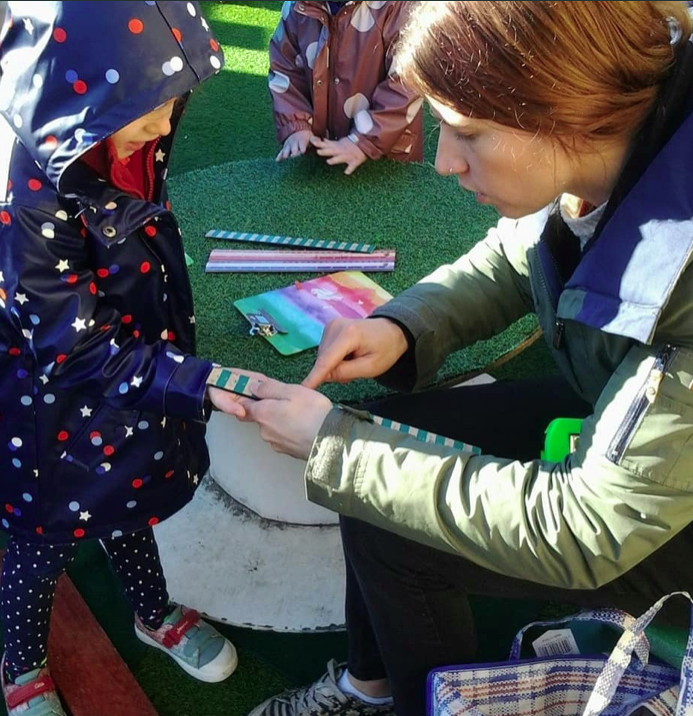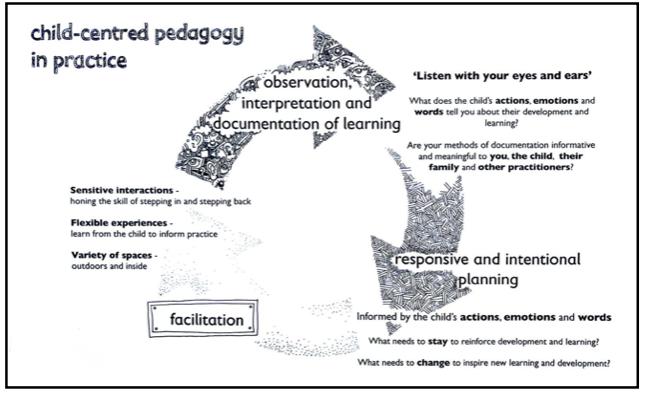Insects at Dalmellinton ECC and Evaporation outdoors at Dean Park Nursery.
This is the first of our monthly blogs. Our aim for these is to give you a flavour of the work we are doing and share some reflections on different themes.
Teaching and learning thorough play: responding to children’s interests.
The teachers in our team are experienced at using play as a mode of teaching. One of the key skills required to be effective at this is knowing how and when to respond to children’s interests, taking these forward into planning and also responding ‘in the moment’, taking advantage of an interest or ‘happening’. Two great examples of these skills in practice were discussed at our team meeting last week and we will share these with you here.
Insects at Dalmellington. Using children’s interests as a starting point.
Mrs Dante and the staff at Dalmellington have been using the characters ‘Sid’ and ‘Shannari’ to help the children develop understanding about the different strands of wellbeing. The children became very interested in the characters and the staff recognised this as something that could be used to promote further learning.
This process sounds simple but requires judgement about the level of children’s interest and the potential of the subject as a starting point for learning. Both these elements need to be ‘strong’ to give this line of enquiry the best chance of being meaningful to the children and useful to their development and learning.
Sometimes we need to take a chance on using something we perhaps have not used before as a starting point because the level of children’s interest is arguably the most important element in this process. Do you agree? We also need to be ready to change direction if the children take the learning down unexpected routes. Perhaps sometimes we are worried about doing this, maybe we have invested time in contemplating various possible lines of development but a change is sometimes needed to re-ignite the children’s interest and enthusiasm.
Really tuning in to the children is essential in developing the skill of judgement in all aspects of teaching and learning through play.
The children at Dalmellington were certainly keen to demonstrate their existing knowledge about insects as you can see in the picture below.


It is important for us to remember that we do not know what children know until we ask them, and to be effective at this we need to create a climate in which they are comfortable in telling us what they know. This takes time to develop.
How do we do this? well, children are skilled at gauging our views about them, they have been ‘programmed’ from birth to ‘read’ us. Our actions, non verbal and verbal send a strong message; do we respect their views? are we really keen to find out what they think and know? do we believe they can be successful learners?
Our ‘image of the child’ will really influence the whole process. If we show children in all the ways we communicate with them that we are serious about hearing from them they will learn to trust us.
We need to be open to what interests emerge, mindful of taking a chance sometimes, applying our professional judgement to support children and take the learning forward. This is a balancing act that is perhaps not a typical model of teaching. It requires relinquishing some of the formal ‘control’ over the process and being ready to adapt. This can be daunting but ultimately it is empowering as when carried out effectively it leads to greater engagement and increased development and learning.
As Chris Miles says: “For me, ‘teaching’ is the intelligence of supporting learning to happen” Miles, 2018 p. 93.
Where might the interest in insects at Dalmellington lead? stay tuned for an update in the next blog!
Top tip on using children’s interests as a starting point:
Good quality visual encyclopaedias are excellent for promoting children’s thinking and questions.
Responding ‘in the moment’, science and maths outdoors at Dean Park Nursery.
Mrs Polland has been working with the staff and children at Dean Park Nursery. They have been making the most of their lovely sunny garden with lots of opportunities for outdoor play using a wide range of resources to promote confidence, creativity and curiosity, discovery and learning.

The children had been playing with water and some of them noticed the water in the small puddles disappearing. Staff recognised an opportunity to introduce the concept of evaporation and this prompted experimentation with different sized pools in different ares of the garden (sunny, shaded) to bring science and maths to life!
Documenting this learning with the children in a way that is accessible to them (for example in their personal learning journals or in the floorbook or simply by using photographs) means they can revisit this and bring greater depth to the learning in the following days.
This anecdote from Dean Park illustrates how crucial the environment and resources are in providing a starting point for learning. Skilled staff knowing when and how to ‘scaffold’ the learning is the next essential element.
Realising the Ambition: Being Me has this useful visual on child-centred pedagogy in practice.

We would be happy to hear feedback on this blog on the form below, and until next month, happy teaching and learning through play!
Reference:
Miles, C. (2018) ‘Access to enriching environments in early childhood: Paradise lost?’, in Trevarthen, C. Delafield-Butt, J & Dunlop, A.W (eds.) The Child’s Curriculum, working with the natural values of children. Croydon: Oxford University Press, p. 93.

